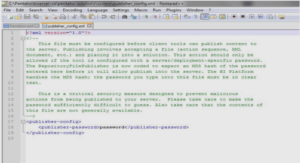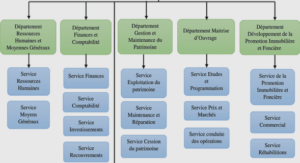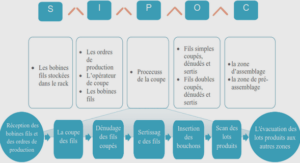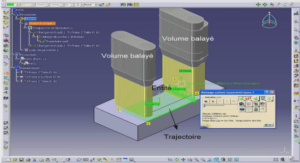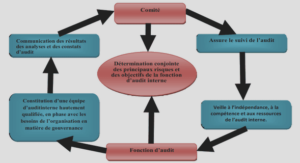Mesh-adapted stress analysis of multilayered plates using a layerwise model
Mesh adaptivity based on field reconstructions
The SCLS1 model is quite expensive due to its high number of degrees of freedom per node. It can be seen as specific, mechanically-based, discretization in the z direction and can therefore be compared to a 3D discretization with a more accurate representation of the stress fields in the z direction. It becomes therefore beneficial to optimize the in-plane mesh for improved computational efficiency.
The purpose of this section is to fulfil this goal by building an error indicator for mesh adaptation. We propose to define this indicator as follows : from the finite-element computed generalized displacements (U i α , Ui 3 , Φ i α , V j,j+1) fields in the (x, y)-plane, we first aim at recons32 2.4. Mesh adaptivity based on field reconstructions tructing a 3D displacement field ub(x, y, z). We then derive the associated 3D strain and stresses using the local constitutive equation. The so-obtained reconstructed stress field σb is then compared to the initial 3D stress σ 3D obtained from the generalized stresses (Ni αβ, Mi αβ, Qi α , τ j,j+1 α , νj,j+1, πj,j+1) via equations (1.7)-(1.9). See the illustration of the scheme in Figure 2.1
Field reconstructions
In this section, we propose to reconstruct ub by considering a continuous piecewise linear variation of its components ubi along the z direction. This interpolation will have to be as close as possible to satisfying equations (1.15)-(1.19). Let us mention that we tried other interpolations (in particular of higher-order) or reconstruction strategies but the latter gave the most satisfying results. Let us first consider the in-plane displacement field. We first build an auxiliary in-plane displacement
Illustrative applications
In this section, we investigate different illustrative applications assessing the quality of the stress field approximation, error indicator and mesh refinement strategy. The last examples consider more practical situations arising when designing composite laminates, namely stress concentrations near holes with associated free-edge singularities and interfacial stress singularities in the presence of interface delamination.
Homogeneous laminate
This first example considers a homogeneous square plate of length l = 1 and thickness h = 0.2. The constitutive material is assumed to be isotropic with E = 10 GPa and ν = 0.3. The plate is fully clamped on its boundary and subject to a uniform loading of intensity q = 8. Calculations are performed considering a uniform discretization of n = 1, n = 3 and n = 5 layers across the thickness and have been compared to finite-element computations using 3D solid elements on a very fine mesh. The initial mesh was a structured mesh of with two triangular elements on each side of the square plate. We start by the simple case with only one layer n = 1. The solution is of good quality 36 2.5. Illustrative applications near the plate center after only one refinement step as shown in Figure 2.2

